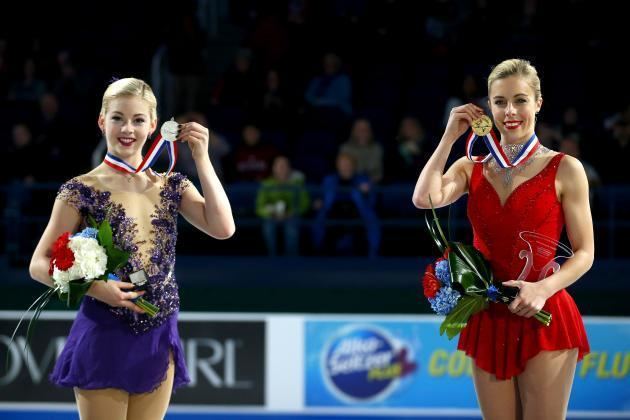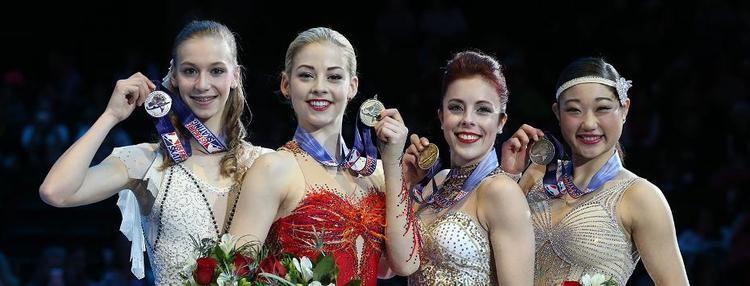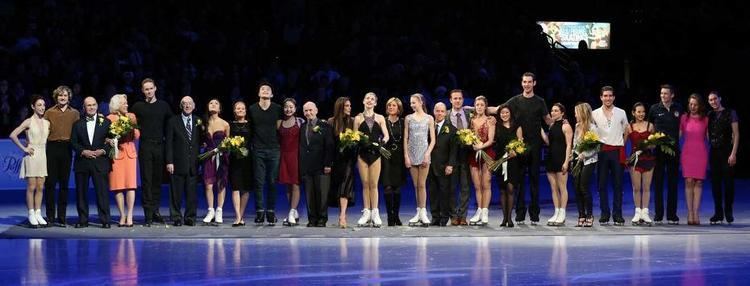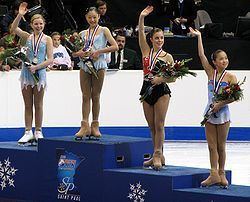 | ||
Instances 2017 US Figure Skating C, 2016 US Figure Skating C, 2015 US Figure Skating C, 2014 US Figure Skating C, 2008 US Figure Skating C | ||
The U.S. Figure Skating Championships is a figure skating competition held annually to crown the national champions of the United States. The competition is sanctioned by U.S. Figure Skating. In the U.S. skating community, the event is often referred to informally as "Nationals". Medals are awarded in four disciplines: men's (boy's) singles, ladies' (girl's) singles, pair skating, and ice dancing in four colors: gold (first), silver (second), bronze (third), and pewter (fourth) on five levels, senior, junior, novice, intermediate, and juvenile. The event is also used to determine the U.S. teams for the World Championships, World Junior Championships, Four Continents Championships, and Winter Olympics, however, U.S. Figure Skating reserves the right to consider other results.
Contents
- Ashley wagner free skate practice hd 2017 u s figure skating championships
- Usage note
- Qualifying
- Regions and sections
- Ladies
- References

Ashley wagner free skate practice hd 2017 u s figure skating championships
Usage note

Unlike in other countries, such as Japan and Russia, where the "Junior National Championships" refers to the National Championships on the Junior level, in the United States, Junior-level skaters compete at the U.S. Championships. Juvenile and Intermediate-level skaters are the skaters who compete at the "U.S. Junior Championships". The similar names for the events can cause confusion when Juvenile and Intermediate level skaters receive local media attention. Junior-level skaters compete at the "U.S. Championships on the Junior-level", whereas Juvenile and Intermediate skaters compete at the "U.S. Junior Championships".

In that vein, the "Junior national champion" is a skater who won Nationals on the Junior level, not a skater who won an event at the U.S. Junior Championships. Those skaters would be the Juvenile and Intermediate national champions.
Qualifying
Qualification for the U.S. Championships begins at one of nine regional competitions. The regions are New England, North Atlantic, South Atlantic, Upper Great Lakes, Eastern Great Lakes, Southwestern, Northwest Pacific, Central Pacific, and Southwest Pacific. The top four finishers in each regional advance to one of three sectional competitions (Eastern, Midwestern, and Pacific Coast). Skaters who place in the top four at sectionals advance to the U.S. Championships.

Skaters can also receive byes to the competition. Skaters can earn the right at the U.S. Championships without qualifying through a sectional championship by

- placing first through fifth in each discipline at the previous national championships on the senior level
- winning a medal at the immediately previous World Championships (e.g., the 2009 World Championships were the immediately previous World Championships for the 2010 U.S. Championships)
- winning a medal at the immediately previous Olympic Winter Games (e.g., the 2006 Winter Olympics were the immediately previous Olympic Games for the 2010 U.S. Championships)
- qualifying for the Junior or the Senior Grand Prix Final. A skater competing in two disciplines will receive a bye only in the discipline in which he or she qualified to the Junior or Senior Grand Prix Final.

Skaters may also receive byes through a qualifying competition if they compete in an international event during the time that qualifying event is to take place. For example, if a skater is competing at an event at the same time as his or her regional competition, that skater would receive a bye to the corresponding sectional competition. If a skater is competing at an event at the same time as his or her sectional competition, that skater would qualify for the national event without having had to compete at a sectional championship.
Skaters may not compete in the same discipline at different levels in the same National Championship, but may compete in different disciplines at different levels. For example, a skater could not compete in both the junior ladies and senior ladies event, but could compete in both the junior ladies and the novice pairs event. Skaters are also not permitted to regress a level; if a skater has competed in senior ladies, she may not compete in junior ladies in any subsequent year.
There are no age limits to competing. The terms "novice", "junior", and "senior" refer to the level of skating, not the age of the competitors. Therefore, competitors on the senior level do not have to be old enough to compete internationally on the senior level, and competitors on the junior level do not have to be young enough to compete internationally on the junior level.
Note that the qualifying rules for the U.S. Championships have varied greatly over the history of the event. The regional qualifying event structure was not uniformly put in place until the 1966–67 season. Also, prior to this time, at sectional qualifying events skaters competed at one level above their national level, so (for instance) senior sectional champions qualified to skate at the junior, rather than senior, national level. Qualification for the senior national championship was through a separate set of rules, essentially based on results from the previous season. There have also been changes at various times to the number of skaters qualifying through sectionals, and to policies for byes.
Regions and sections
Ladies
^† In June 1994, U.S. Figure Skating voted to strip Tonya Harding of her 1994 title. However, the competition results were not changed and the title was left vacant rather than moving all the other competitors up one position.
